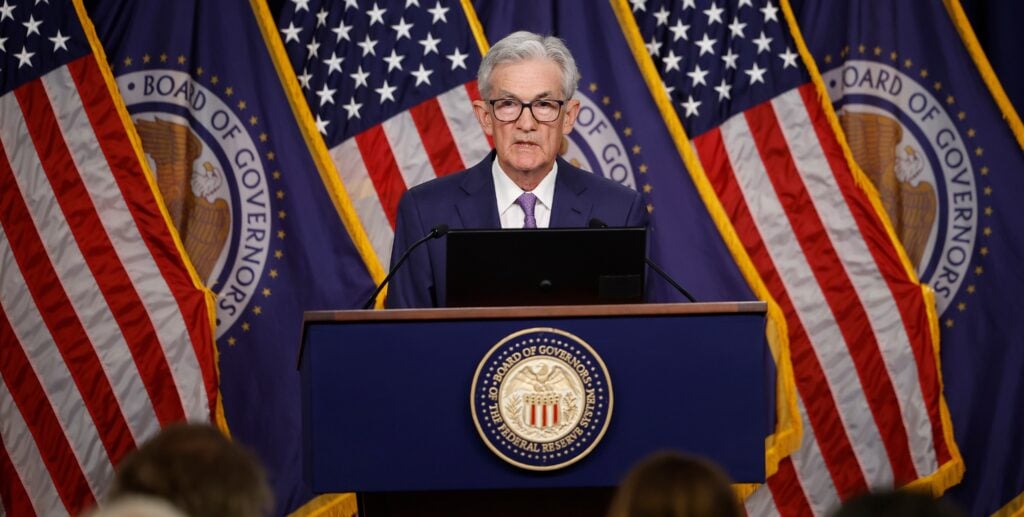Whether it’s refining your business model, mastering new technologies, or discovering strategies to capitalize on the next market surge, Inman Connect New York will prepare you to take bold steps forward. The Next Chapter is about to begin. Be part of it. Join us and thousands of real estate leaders Jan. 22-24, 2025.
What happens to a “power buyer” when buyers have the power?
Tim Heyl, CEO of the Austin-based power buyer Homeward, has an answer.
The company had to rapidly scale to meet the demand for cash offers in 2020 and 2021, when homes sold quickly, garnered multiple offers and went for over asking price.
Demand for companies to turn consumers into so-called power buyers spiked as homebuyers sought ways to edge out multiple competing bidders on homes. Homeward adjusted to meet the need.
During that same market, Homeward gave homeowners the flexibility to buy their next home before selling their existing one.
That all largely froze when interest rates spiked in 2022 and 2023, and homeowners remained rate-locked in their existing homes, unwilling to take on the added cost of buying even a less-expensive home.
Heyl said Homeward shifted to give homeowners an instant cash offer, the certainty to close within days, and the ability to receive full price for their homes in exchange for an administrative fee.
It’s an alignment of interests that’s distinct from traditional iBuyers who have struggled to achieve consistent profitability in a variety of market types, Heyl said.
Heyl will be on stage at the inaugural Inman Connect Austin next month. He met with Inman this month to dish on how Homeward shifted in the high-rate, low-sales environment to meet the needs of sellers in a buyer-friendly environment.
The following interview has been edited and condensed for clarity.
Inman: The last time we talked was December 2022. It’s been an interesting 18 months. Tell me where your mind is at right now. How have the past 18 months been and what are you looking forward to?
Heyl: This huge need for a first-time homebuyer to make an all-cash offer declined fast. The other challenge is that for existing homeowners who need to buy and sell simultaneously, that’s typically not a buyer’s market or seller’s market problem. That’s a liquidity problem that exists in all markets.
There’s one very unique market where it doesn’t exist as much, and that’s when interest rates change as fast as they did; it sort of just froze that buy-sell customer or buy-sell consumer in the marketplace. It became more expensive to buy a less expensive home. For most of these buyers to move down was actually more expensive. There’s no incentive to do that.
And then, to move up costs so much more than what it used to that these move-up and move-down customers just kind of froze in the market. So you saw a lot of power buyers who were helping buyers buy; those products declined in demand.
On the other side, you saw something different with the iBuyer model in that when the market softened, the demand from a seller for a reasonable cash offer skyrocketed because homes are taking longer to sell. Sellers were less certain of if they would sell their home at all. And if they did, what price would it sell for? It became months and months of going through this process.
So how did you adjust?
Homeward launched another product into the market; it’s the Homeward Cash Offer for Sellers. What we realized is that while the trade up and trade down customer is sitting on the sidelines right now, there are still 4 million transactions a year happening. And a lot of these sellers, they’re just selling. They’re not trying to buy another home simultaneously.
We wanted to be able to bring an offer to these sellers to fill that gap in the marketplace that I just described. We knew that we needed to be able to protect our risk. We can’t go in and make a full-price offer. But we also know that sellers don’t want to give all their money away. The majority of their net worth is tied up in their home equity.
We’ll buy their house and we’ll cash the seller out just like an iBuyer would, in a matter of days. After they move out, we’ll go and get the home ready in its best-selling condition and work with their real estate agent to sell the home on the open market for its full price. When we do resell it for its full market value, we pass all of those upside proceeds back to the seller.
What’s the upside for Homeward?
It’s kind of the best of both worlds. It’s the seller’s ability to generate a cash offer on demand and sell in a matter of days, get most of their home equity, and move on and not have to deal with repairing the house and going through a multi-month sale process. But it’s paired with all of the benefits of a traditional market sale with their real estate agent actually going and getting that full market price.
The sellers pay us a transaction fee in order to provide this service for them. We charge a 6 percent fee. So unlike an investor who is flipping the house and trying to monetize the home price appreciation or the bulk of the equity in the home, we’re simply charging a service fee, cashing them out of their home, and going out and getting them their full market value on the back end after they’ve moved out.
What happens if a house doesn’t sell or doesn’t hit the price point that you were expecting? Is it the seller that’s on the line to make up the gap, or what happens in that situation?
When we buy the seller out of their home, they never have to bring any more money to the table. So they’ve cashed out and their certainty of sale is done.
But we buy the home at a discount to create a buffer to make sure that the home is going to sell above that price. And so, if it sells below that discounted offer that we initially made, then, you know, then that’s a loss that Homeward will take.
It’s very rare. We do take that discount up front. But all of the upside, whether it sells for the amount that Homeward thought it would sell for or more than that amount or less than that amount, whatever those upside proceeds are, they do go back to the seller.
This seems distinct from traditional iBuyers, and I wanted to ask you about them, generally. They struggled to make a profit when things were hot. They’re struggling when things are cold. Will they ever have a Goldilocks moment?
You have to align incentives between the business and the customer. Some of these models that exist today don’t align those incentives. With an iBuyer model, the higher the cash offer, the better it is for the consumer, but the more risky and less profitable it is for the iBuyer. The lower the cash offer amount, the worse it is for the consumer, but the better it is for the iBuyer. They’re at odds.
It’s an investor buying a house from a consumer. You know, it’s an investor flipping somebody’s house and taking their upside. And so the challenge is there was incredible demand when the iBuyers were paying full market price.
And so the challenge is for these companies, can they find a spread that is good for the consumer, good for the seller and good for their economics? I think we’ve yet to see that.
On the ground, I see headlines where it’s like Austin’s at the top, Boise’s next. There are these pandemic-era darling markets that now are also at the top for the inverse reason. Give me a little flavor of Austin as an agent.
I just took a listing. A $3 million, $3.5 million home in central Austin. In that neighborhood, there are 25 homes for sale between $2.5 million and $4.5 million. There’s one home that’s pending in that price point in that neighborhood — 25 for sale, one pending.
That’s a bit of an extreme. Austin is a bit of an extreme in and of itself. But this is the challenge that we’re living in. This is the challenge that homesellers are increasingly having.
Austin is, without question, one of the more challenging markets across the country because it boomed really fast. Like with most things that go up, they come down, and Austin is definitely paying the price for how fast it grew.
It reminds me of 2009, when I first got in. Taking a listing in 2021 was exciting as a real estate agent because you knew you were going to make some money. Now, in 2024, you take a listing and it doesn’t exactly mean you’re going to make some money. It means you better go do your job and price it right and go get the thing sold because many of the homes that are listing are not actually getting offers and not actually selling.



















 English (US) ·
English (US) ·